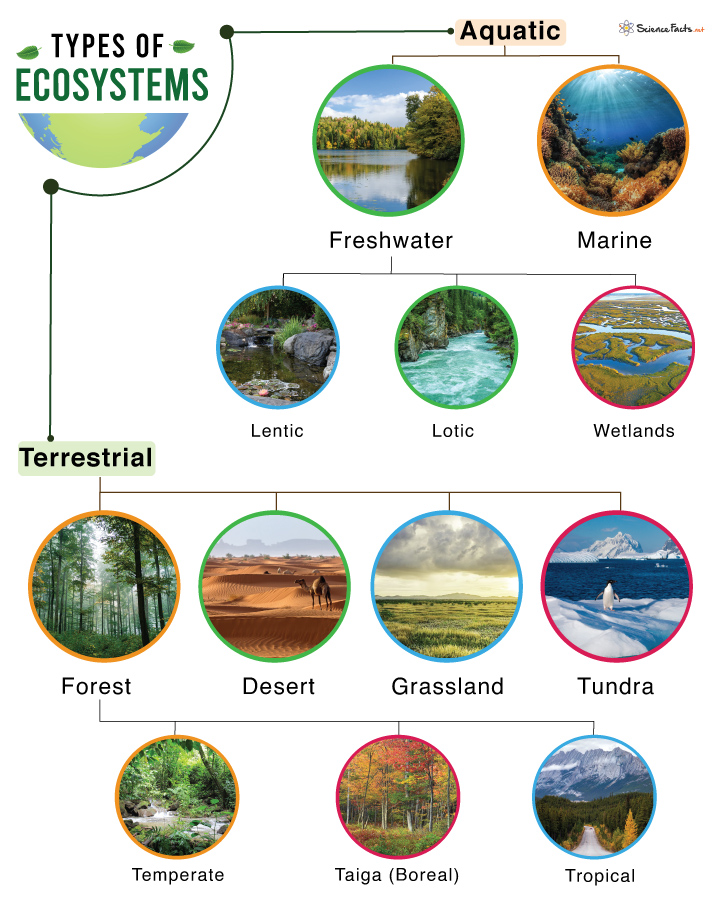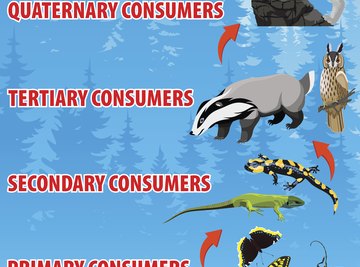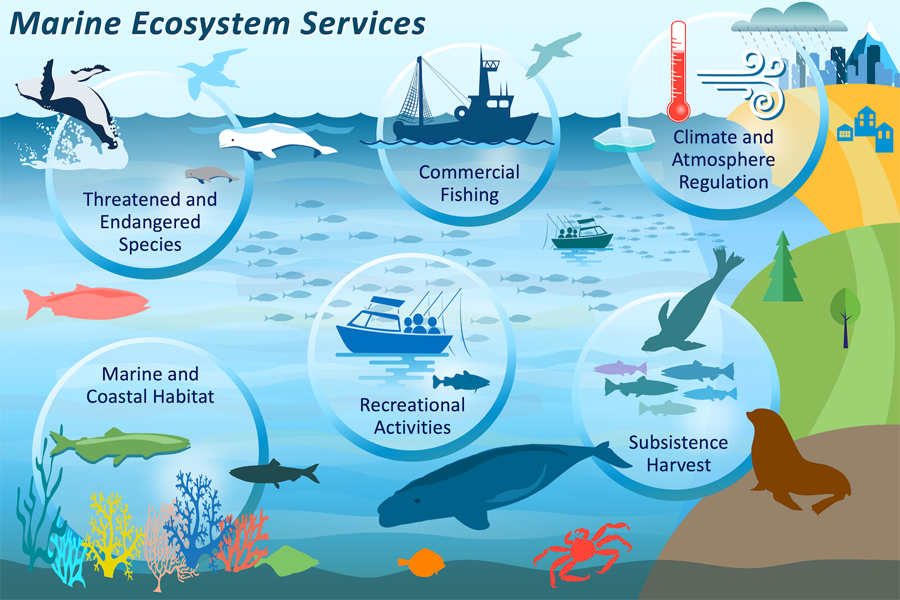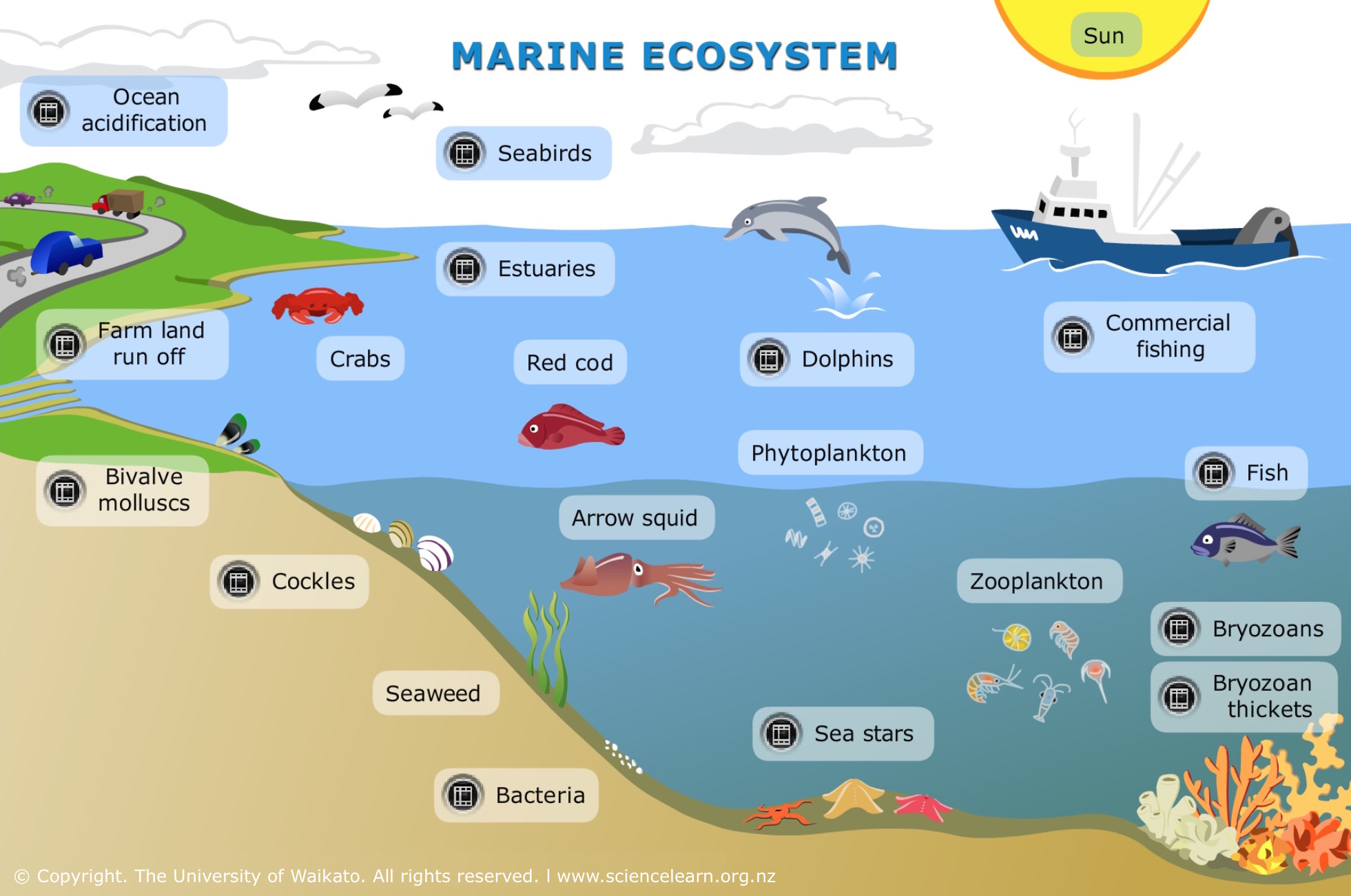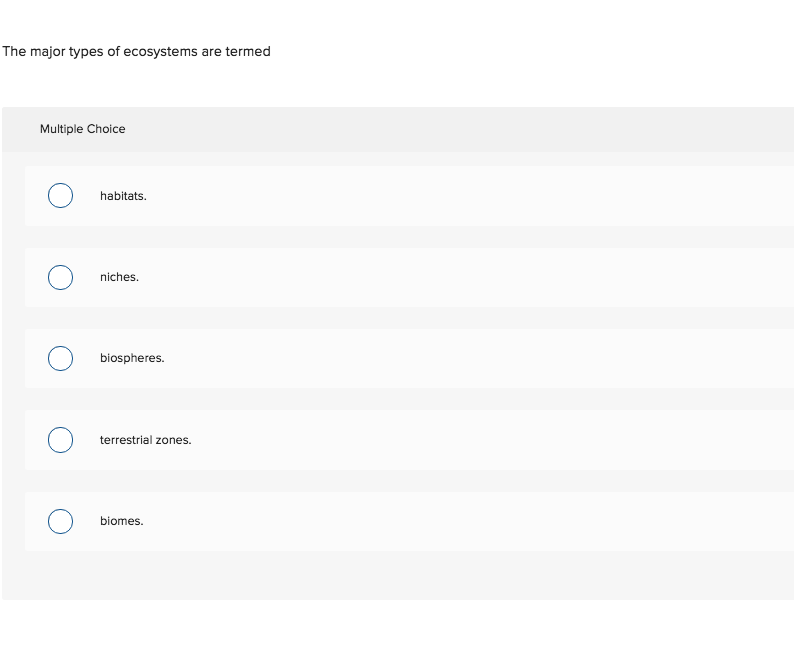Topic types of consumers in ecosystem: Discover the intricate web of life with "Types of Consumers in Ecosystems": a fascinating exploration into how various organisms play pivotal roles in maintaining ecological balance.
Table of Content
- Why are there different types of consumers in an ecosystem?
- Understanding Ecosystem Dynamics
- Primary Consumers: Herbivores
- Secondary Consumers: Carnivores
- Tertiary Consumers: Top Predators
- Quaternary Consumers: Apex Predators
- Omnivores: The Flexible Consumers
- YOUTUBE: Types of Consumers: Herbivores, Omnivores, and Carnivores
- Decomposers and Detritivores: Nature"s Recyclers
- The Role of Megafauna in Ecosystems
- Impact of Human Activities on Consumer Dynamics
- Conservation Efforts to Protect Ecosystem Consumers
Why are there different types of consumers in an ecosystem?
There are different types of consumers in an ecosystem because each type plays a unique role in the food chain and helps to maintain a balanced ecosystem. These consumers can be categorized into four main types:
- Herbivores: Herbivores are consumers that primarily feed on plants. They obtain their energy by consuming vegetation and are also known as primary consumers.
- Carnivores: Carnivores are consumers that primarily feed on other animals. They obtain their energy by consuming meat and are often referred to as secondary consumers.
- Omnivores: Omnivores are consumers that have a diet consisting of both plants and animals. They obtain their energy by consuming both vegetation and meat, making them versatile consumers.
- Decomposers: Decomposers are consumers that break down dead organic matter and recycle nutrients back into the ecosystem. They play a vital role in the decomposition process and are crucial for the overall health of the ecosystem.
The presence of different types of consumers ensures efficient transfer of energy and nutrients within the ecosystem. Each type of consumer has a specific feeding strategy, which contributes to maintaining the population balance and preventing the dominance of any particular species. This diversity in consumer types promotes species interactions and helps to regulate the ecosystem\'s functions.
READ MORE:
Understanding Ecosystem Dynamics
Ecosystem dynamics are fundamental to comprehending the natural world, highlighting the intricate relationships and energy flows between organisms. At the heart of these dynamics are consumers, which play pivotal roles in transferring energy across different levels of the ecosystem.
- Primary Consumers: Herbivores that feed directly on producers, such as plants and algae, initiating the energy transfer.
- Secondary Consumers: Carnivores that consume primary consumers, adding a layer of complexity to the food web.
- Tertiary Consumers: Predators that feed on secondary consumers, occupying higher trophic levels and further distributing energy.
- Quaternary Consumers: Apex predators at the top of the food chain, with no natural predators, ensuring ecosystem balance.
Each consumer type plays a crucial role in ecosystem stability, influencing population control, nutrient cycling, and habitat structuring. Understanding these dynamics helps us appreciate the biodiversity and interconnectedness of life on Earth, emphasizing the importance of each organism, no matter how small, in maintaining ecological balance.

Primary Consumers: Herbivores
Primary consumers, or herbivores, are the backbone of ecosystems, serving as a crucial link between the sun"s energy, captured by plants, and the rest of the food web. These organisms have the unique ability to extract energy directly from plants, initiating the energy flow that sustains all subsequent consumer levels.
- Grassland Ecosystems: Herbivores such as zebras and antelopes graze on grasses, playing a key role in shaping the vegetation structure and promoting biodiversity.
- Forest Ecosystems: In forests, deer, and other browsing animals consume leaves and stems, affecting forest dynamics and undergrowth patterns.
- Aquatic Ecosystems: Small fish and aquatic invertebrates feed on algae and plankton, linking the aquatic food web from microscopic producers to apex predators.
- Desert Ecosystems: Desert herbivores like the kangaroo rat have adapted to consume and derive moisture from seeds and plants, showcasing the adaptability of primary consumers.
Understanding the role of herbivores is crucial for conserving biodiversity and ecosystem health. Their feeding behavior not only determines the distribution and abundance of plant species but also influences the structure and function of their habitats. By managing plant populations, they contribute to the cycling of nutrients and energy, fostering a balanced and dynamic ecosystem.
Secondary Consumers: Carnivores
Secondary consumers, or carnivores, play a pivotal role in ecosystem dynamics by regulating the populations of primary consumers, thus maintaining balance within their habitats. These animals rely on a diet composed entirely of other animals, showcasing a diverse array of hunting strategies and dietary preferences.
- Small Carnivores: Creatures like spiders and frogs consume insects, controlling their populations and preventing outbreaks that could damage ecosystems.
- Medium Carnivores: Birds of prey and snakes target rodents and birds, acting as natural pest control and contributing to biodiversity.
- Large Carnivores: Apex predators such as lions, wolves, and bears prey on large herbivores, influencing their behavior and distribution, which in turn affects vegetation patterns and the overall structure of the ecosystem.
By preying on the sick, weak, and older individuals, carnivores help ensure the health and vitality of the herbivore populations. This selective pressure can lead to evolutionary adaptations in both prey and predator species, illustrating the complex interplay of natural selection within ecosystems. Understanding the role of carnivores is essential for conservation efforts, as their presence or absence can significantly impact the ecological equilibrium.

Tertiary Consumers: Top Predators
Tertiary consumers stand at the apex of food chains, acting as top predators. These organisms are crucial for maintaining the balance within ecosystems by controlling the population of secondary consumers and preventing overgrazing of primary producers.
- Ecological Role: They ensure ecological stability by keeping other consumer populations in check, thus preventing any single species from dominating and altering the habitat.
- Examples: Eagles, sharks, and large cats such as lions and tigers are classic examples, each playing a pivotal role in their respective environments.
- Impact of Loss: The removal or decline of these top predators can lead to trophic cascades, where the absence of predator control leads to the overpopulation of herbivores, subsequently resulting in the overconsumption of vegetation and a decline in ecosystem health.
- Conservation Importance: Protecting these predators is vital for preserving biodiversity and the integrity of ecological processes, highlighting the need for targeted conservation efforts.
Understanding the dynamics involving tertiary consumers offers insights into the complexity of food webs and the importance of each species in maintaining ecological balance.
Quaternary Consumers: Apex Predators
Quaternary consumers, the apex predators, occupy the pinnacle of the food web. Unchallenged by natural predators, their survival is crucial for ecosystem balance and biodiversity. Their role extends beyond merely controlling populations; they influence the distribution and behavior of lower trophic levels through their predatory activities.
- Key Characteristics: These predators are highly adaptable, capable of hunting a variety of prey across different ecosystems, illustrating the interconnectedness of life.
- Impact on Ecosystem: They help regulate the numbers of both primary and secondary consumers, preventing any single group from overpopulating and degrading habitat quality.
- Examples: Polar bears in the Arctic, great white sharks in oceans, and crocodiles in freshwater habitats are prime examples of quaternary consumers.
- Conservation Challenges: Human activities pose significant threats to apex predators, including habitat destruction, pollution, and climate change, necessitating focused conservation efforts.
The presence of apex predators is a key indicator of ecological health. Protecting these magnificent creatures supports the overall resilience and sustainability of ecosystems worldwide.

Omnivores: The Flexible Consumers
Omnivores are the adaptable players in ecosystems, capable of consuming both plant and animal matter. Their dietary flexibility allows them to play multiple roles within the food web, contributing to the complexity and resilience of ecosystems.
- Dietary Diversity: Their diets include fruits, nuts, seeds, insects, and small animals, showcasing the wide range of ecological niches they occupy.
- Ecological Impact: Omnivores can control populations of both primary consumers (herbivores) and secondary consumers (smaller carnivores), helping to maintain balanced ecosystems.
- Examples: Bears, humans, and pigs are among the most recognizable omnivores, each with unique feeding habits that reflect their habitats and physiological adaptations.
- Adaptation and Survival: The ability to eat a varied diet provides omnivores with a competitive edge, especially in changing environments where food availability may fluctuate.
Understanding omnivores and their role highlights the interconnectedness of ecosystem members and the importance of dietary diversity in sustaining ecological balance.
Types of Consumers: Herbivores, Omnivores, and Carnivores
\"Discover the latest trends and insights on consumer behavior in our fascinating video! Dive into the world of consumers and learn how their choices shape the market. Don\'t miss out on this opportunity to gain valuable knowledge that can help you better understand your target audience.\"
Trophic Levels: Producer, Primary Consumer, Secondary Consumer, Tertiary Consumer, and Decomposers
\"Explore the intricate web of trophic levels in our captivating video! Journey through the different levels of the food chain and uncover the complex relationships between organisms. Gain a deeper appreciation for the delicate balance of nature and the vital role each trophic level plays in sustaining life on Earth.\"
Decomposers and Detritivores: Nature"s Recyclers
Decomposers and detritivores are essential for the health of ecosystems, breaking down dead organic matter and recycling nutrients back into the soil, making them available for new growth. Their work completes the nutrient cycle, supporting the foundation of ecosystems.
- Role in Ecosystem: They decompose dead plants and animals, converting them into organic material that enriches the soil.
- Types of Decomposers: Fungi and bacteria are the primary decomposers, breaking down complex organic compounds into simpler molecules.
- Detritivores at Work: Earthworms, certain insects, and scavengers like vultures contribute by breaking down dead matter into smaller pieces, which decomposers can then more easily process.
- Environmental Impact: By recycling nutrients, they ensure the sustainability of ecosystems, preventing the buildup of dead material and promoting soil health.
Their unseen work is crucial for the continuation of life, highlighting the importance of every organism in maintaining ecological balance.

The Role of Megafauna in Ecosystems
Megafauna, the large animals of ecosystems, play irreplaceable roles in maintaining ecological balance and biodiversity. Their size and dietary habits influence vegetation patterns, seed dispersal, and the structure of habitats, making them key components in their environments.
- Keystone Species: Many megafauna act as keystone species, whose presence or absence has a significant impact on the surrounding biological community.
- Seed Dispersal: Large herbivores contribute to the dispersal of seeds, aiding in plant propagation and the spread of vegetation.
- Soil Modification: The movement and feeding behavior of megafauna can alter soil composition and structure, affecting plant growth and the availability of resources.
- Ecosystem Engineers: By modifying their environment through physical means, megafauna create, maintain, or destroy habitats for other organisms.
- Conservation Challenges: Many megafauna face threats from habitat loss, poaching, and climate change, highlighting the need for focused conservation efforts to preserve these crucial ecosystem components.
The role of megafauna is vital for ecosystem health, underlining the importance of their conservation for the stability and diversity of life on Earth.
Impact of Human Activities on Consumer Dynamics
Human activities have a profound impact on consumer dynamics within ecosystems, affecting the balance and health of biological communities worldwide. The alteration of habitats, pollution, climate change, and direct exploitation of species are among the key factors that influence consumer populations and their interactions.
- Habitat Alteration: Deforestation, urbanization, and agriculture change the landscape, reducing available habitat for many consumers and altering the food web structure.
- Pollution: Chemical pollutants from industrial and agricultural sources contaminate water and soil, affecting the health and reproductive capabilities of both primary and secondary consumers.
- Climate Change: Shifts in climate patterns can alter the distribution of species and availability of resources, forcing consumers to adapt, migrate, or face decline.
- Overexploitation: Overfishing, hunting, and poaching reduce populations of specific consumer species, which can have cascading effects on ecosystem dynamics.
- Invasive Species: The introduction of non-native species can disrupt local food webs, often outcompeting or preying on native consumers.
The cumulative impact of these activities challenges the resilience of ecosystems, emphasizing the need for sustainable practices and conservation measures to protect and restore the delicate balance of consumer dynamics.

READ MORE:
Conservation Efforts to Protect Ecosystem Consumers
Protecting the consumers in ecosystems is critical for maintaining biodiversity and ecological balance. Conservation efforts worldwide are aimed at preserving these vital links in the food web, ensuring their survival and the health of ecosystems.
- Protected Areas: Establishing national parks, wildlife reserves, and marine protected areas to safeguard habitats from human encroachment and exploitation.
- Legislation: Enforcing laws and regulations that limit hunting, fishing, and trade of endangered species to prevent their exploitation and decline.
- Restoration Projects: Initiating ecosystem restoration projects to rebuild habitats, reintroduce native species, and remove invasive species that threaten ecosystem balance.
- Climate Change Mitigation: Addressing climate change through global initiatives to reduce carbon emissions, which threaten habitats and food sources for many consumers.
- Community Involvement: Engaging local communities in conservation efforts, providing education on sustainable practices and the importance of biodiversity.
- Research and Monitoring: Supporting scientific research to monitor consumer populations and ecosystem health, informing conservation strategies and adjustments.
Through these efforts, conservationists aim to protect and restore the delicate web of life, ensuring a sustainable future for all ecosystem consumers.
Exploring the diverse roles of consumers in ecosystems reveals the intricate balance of nature. By understanding and protecting these vital players, we ensure the health and resilience of our planet for future generations to cherish and sustain.

